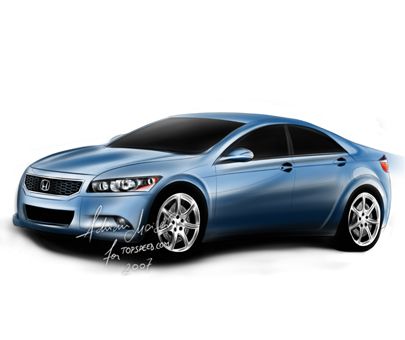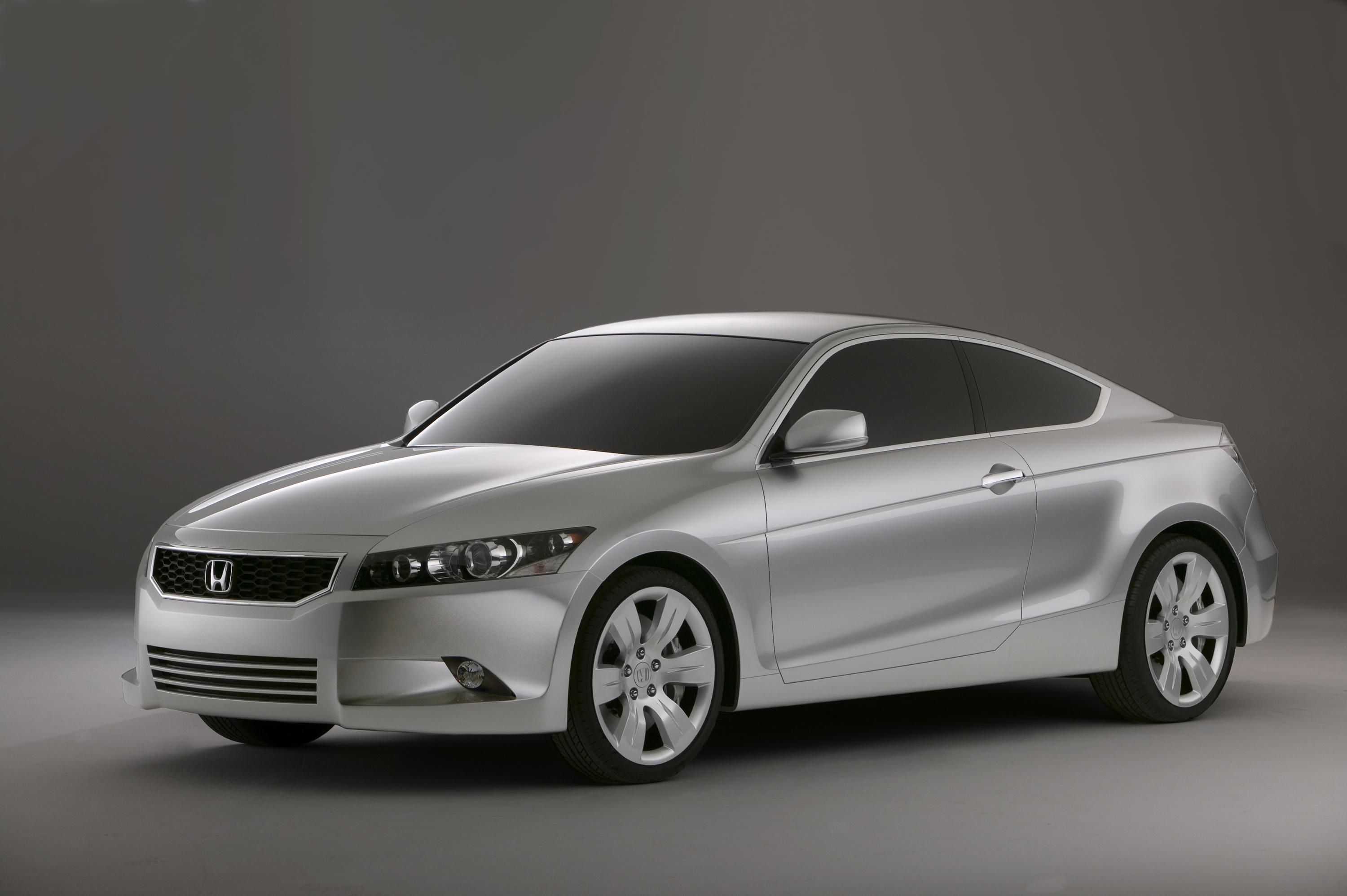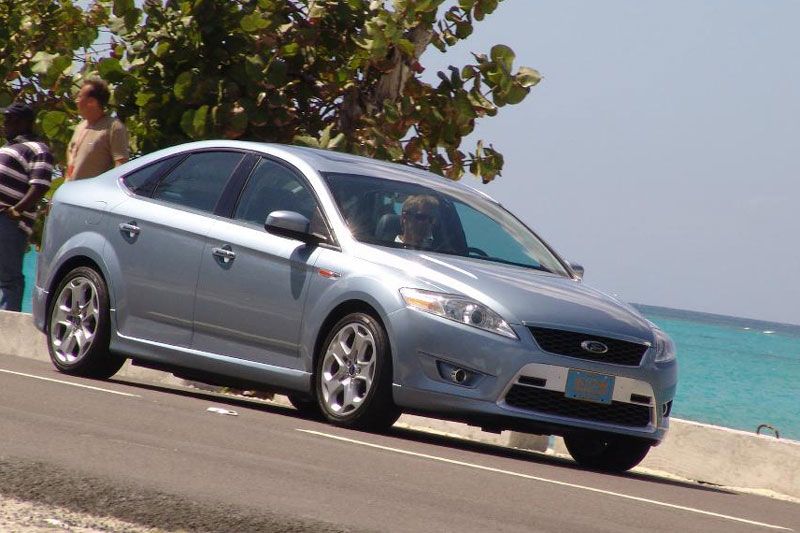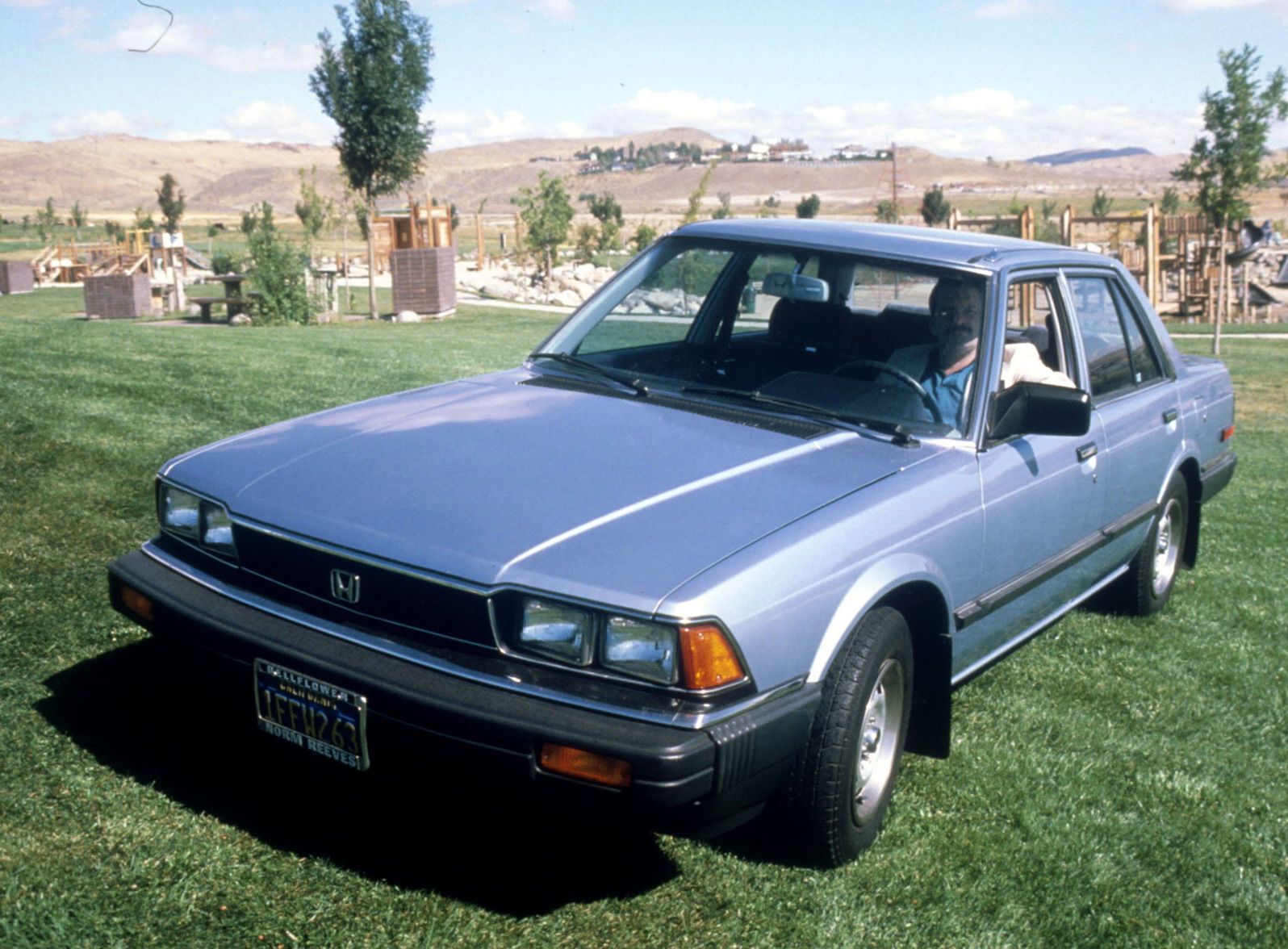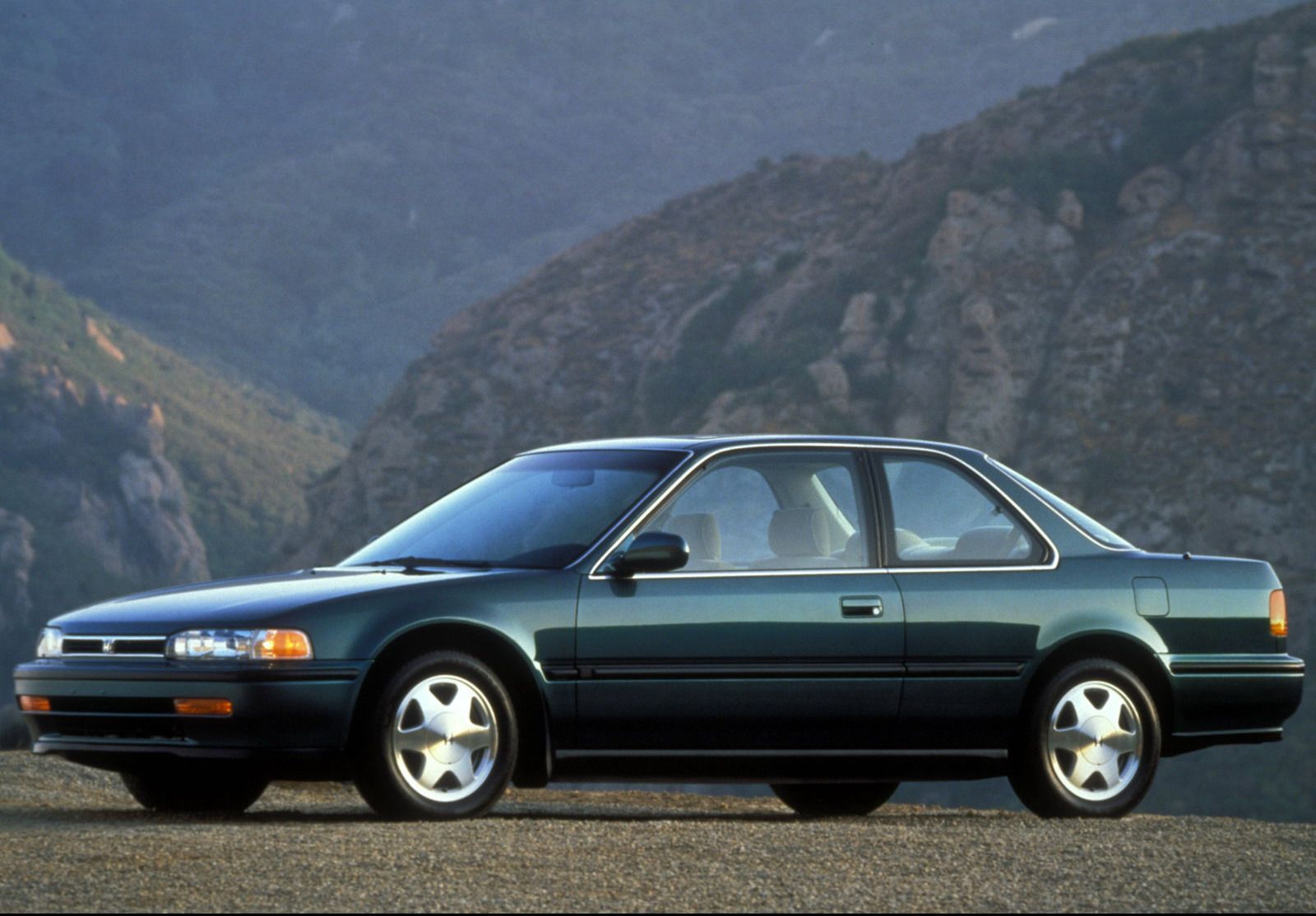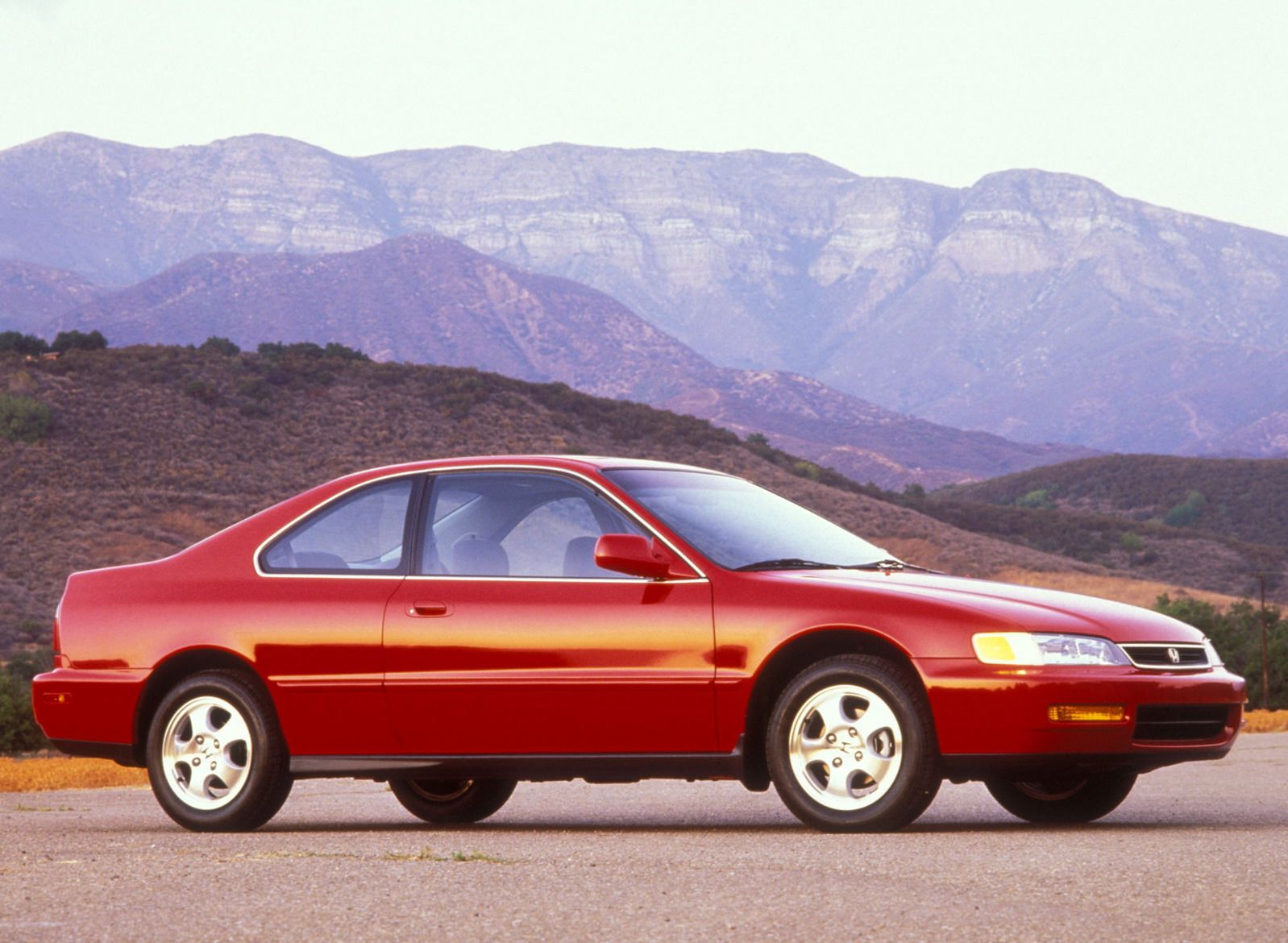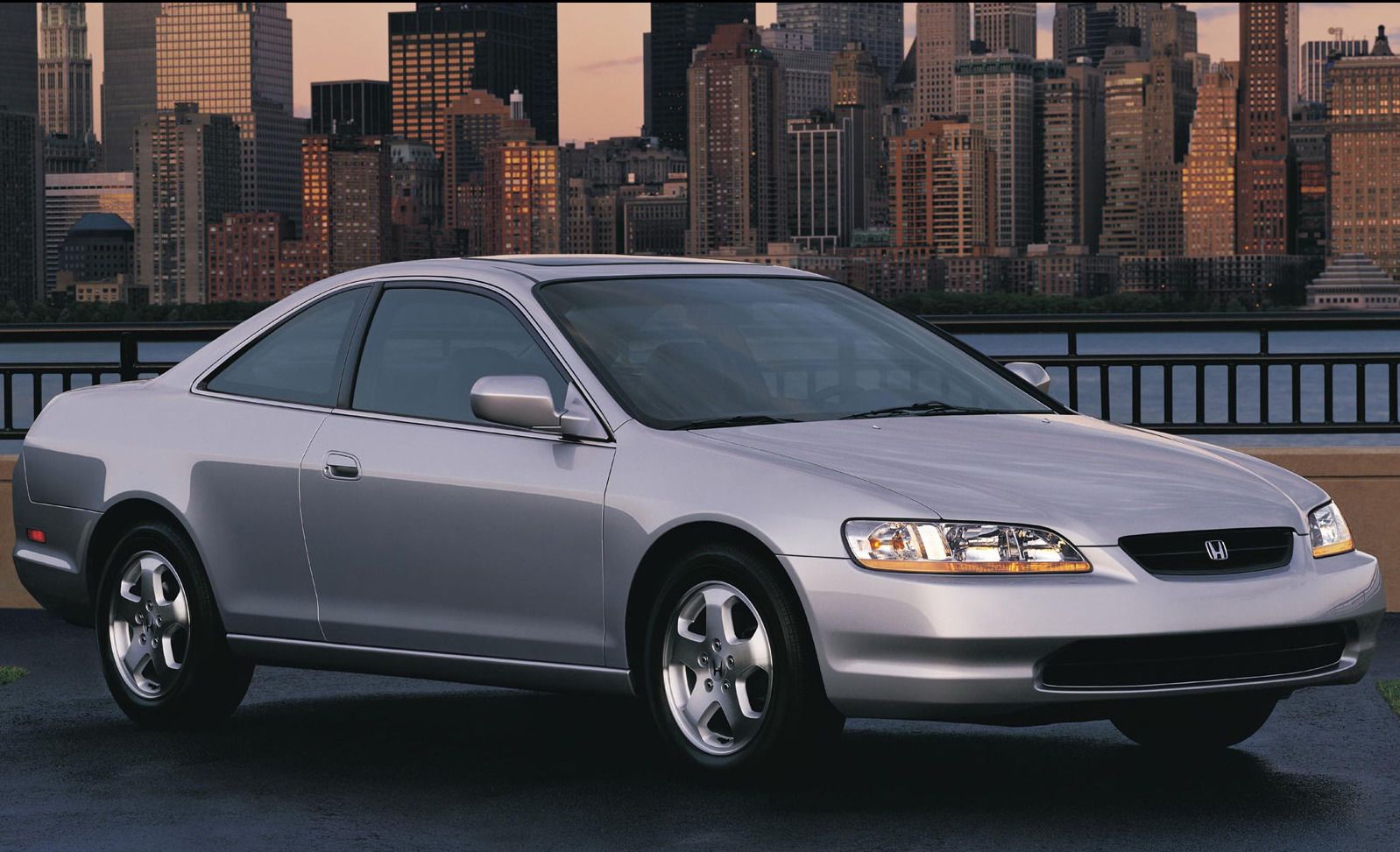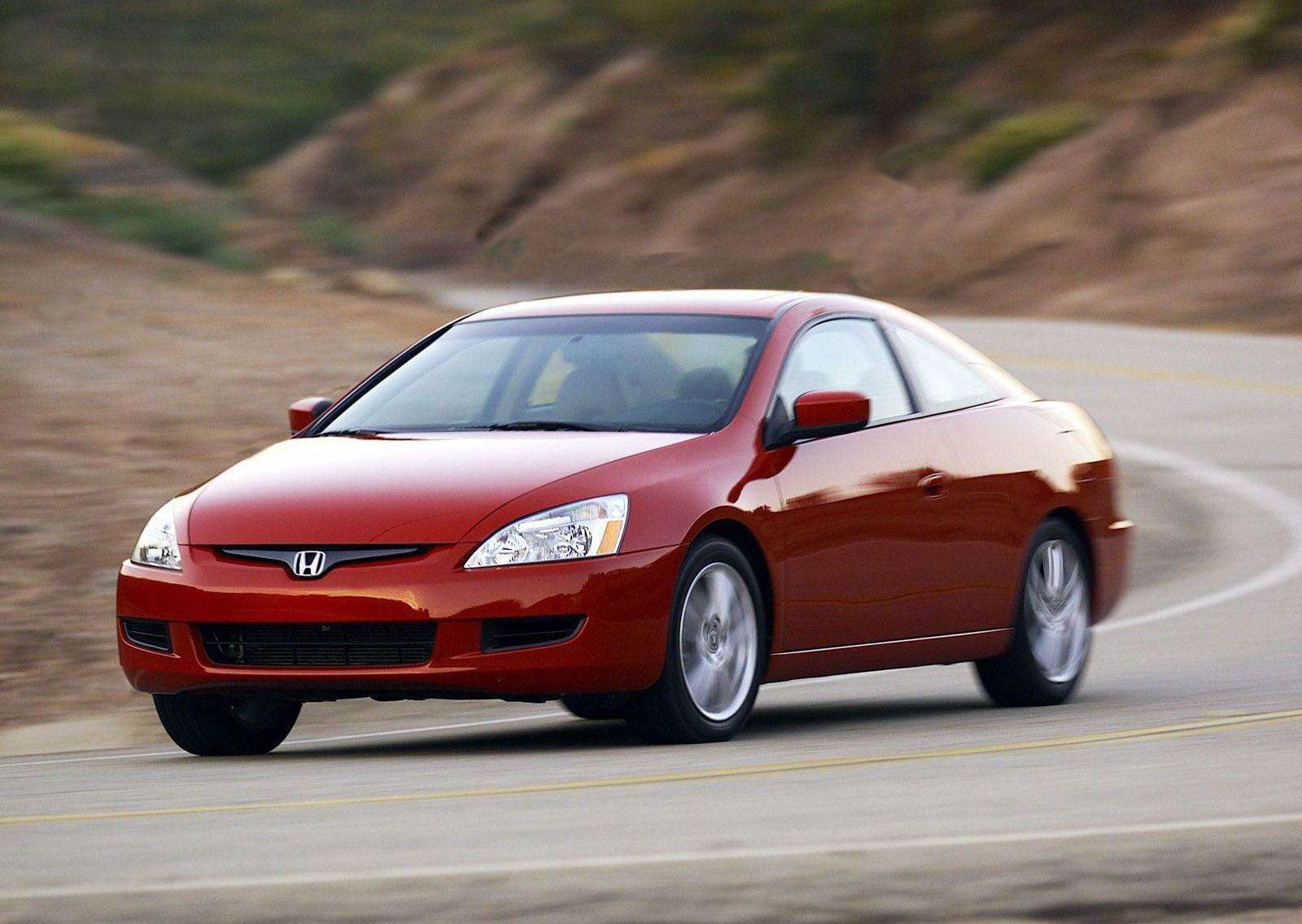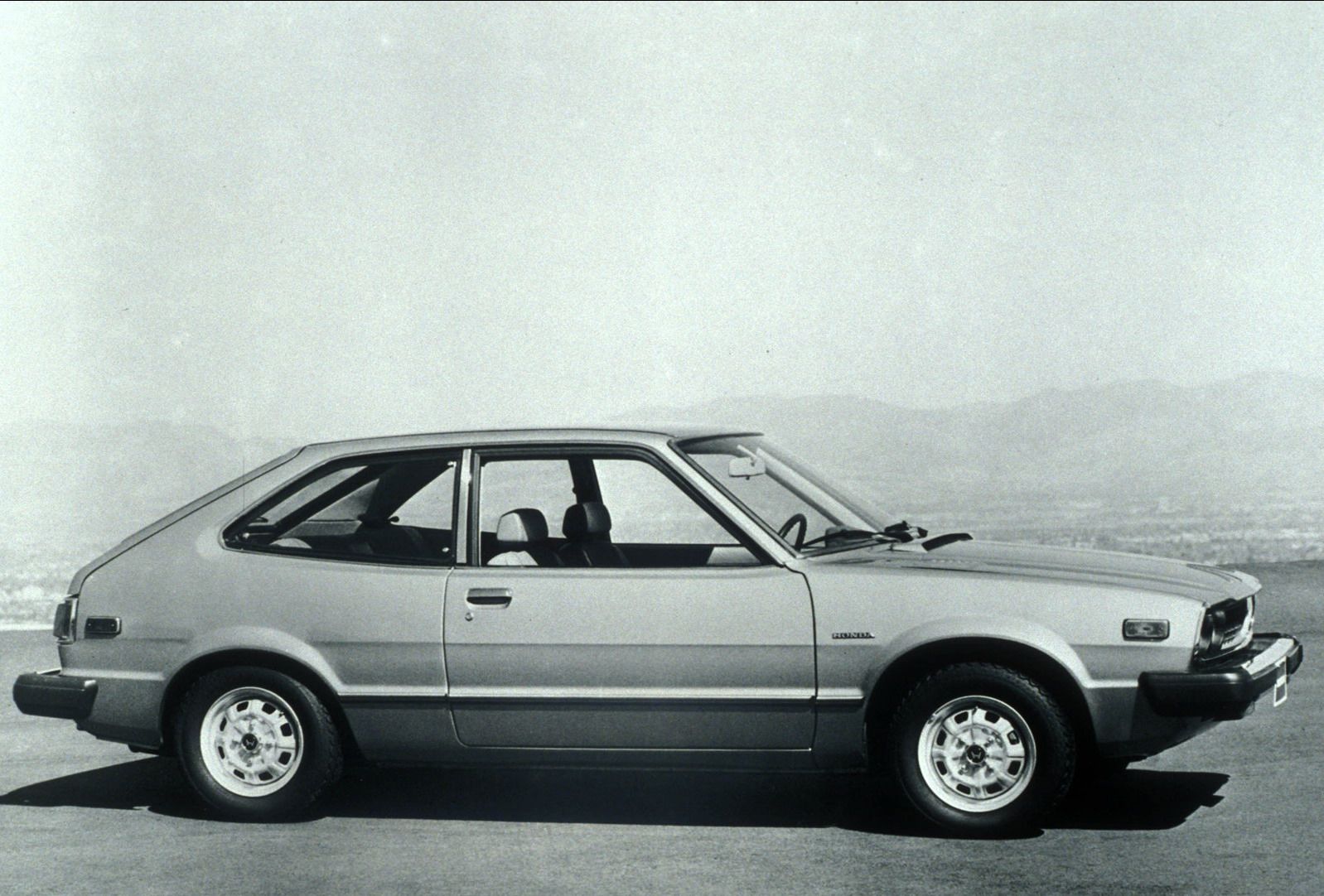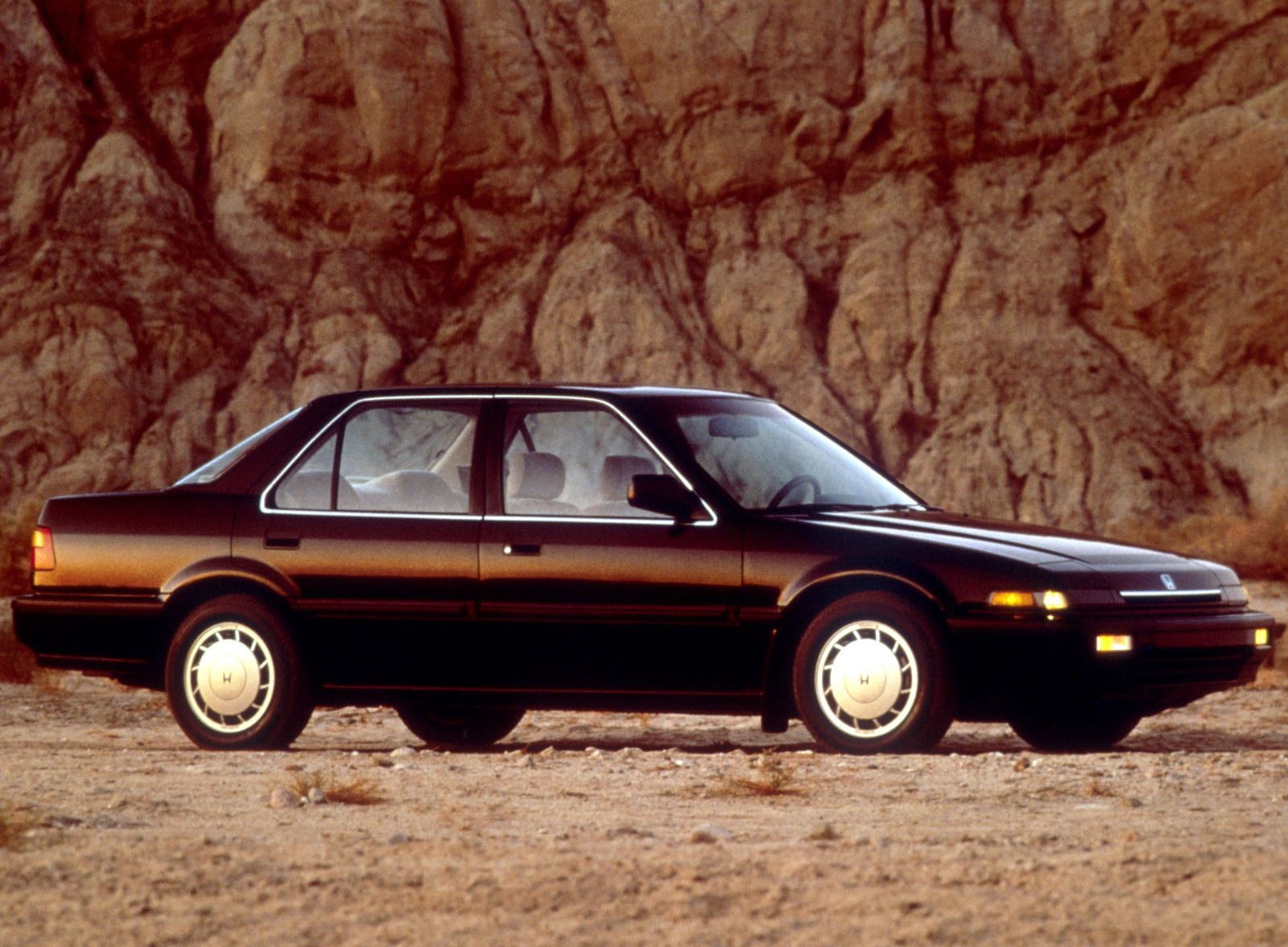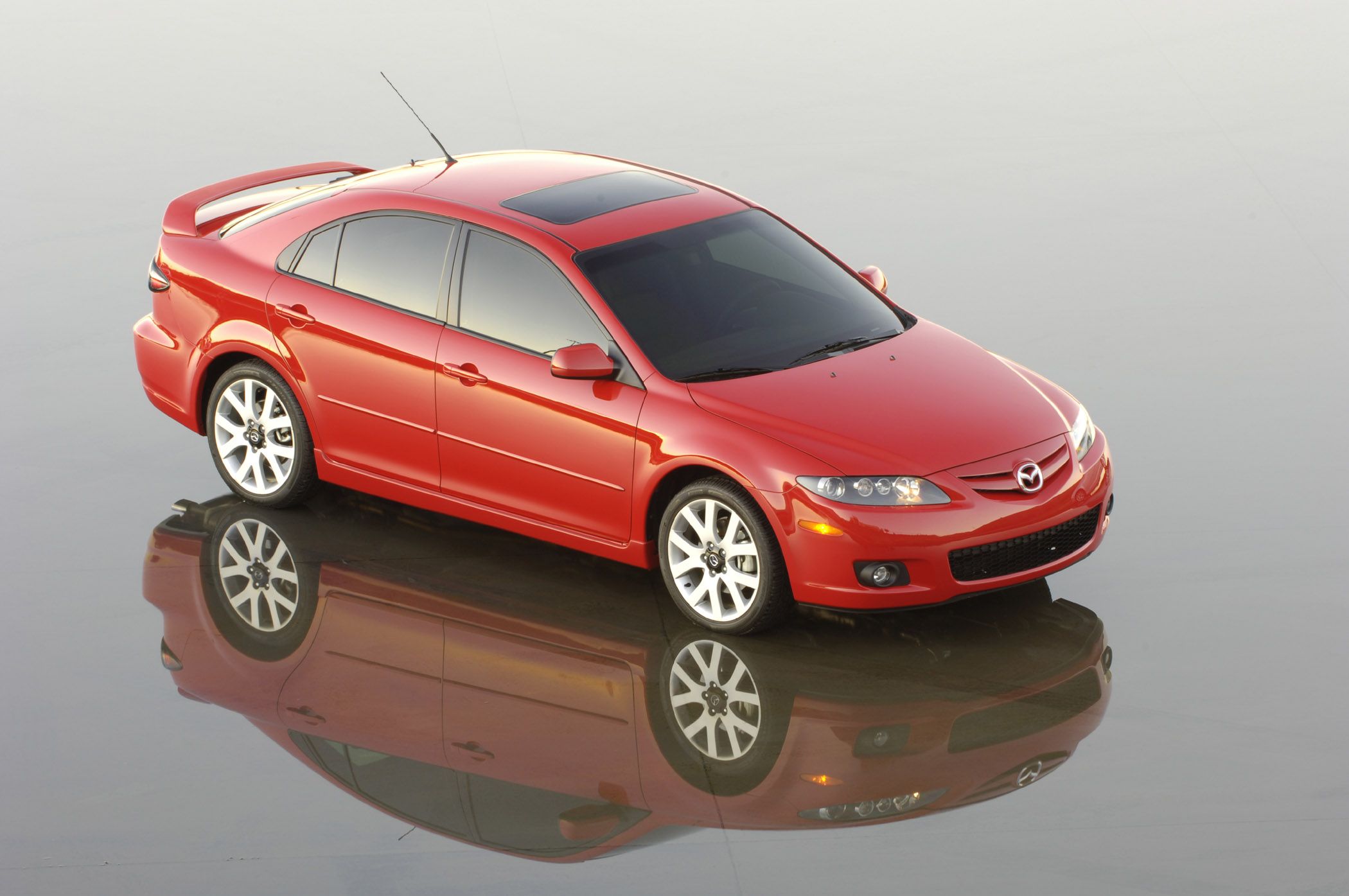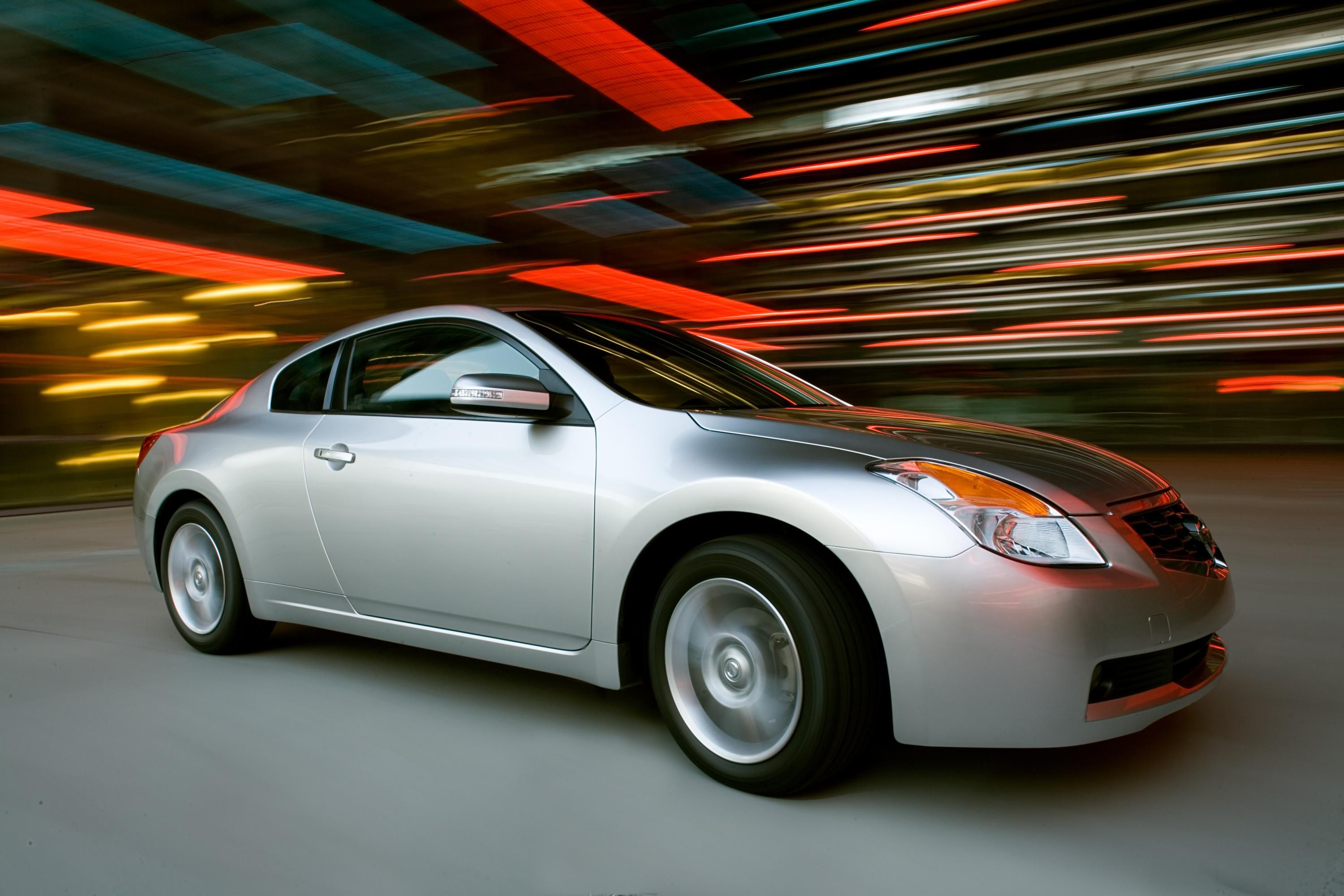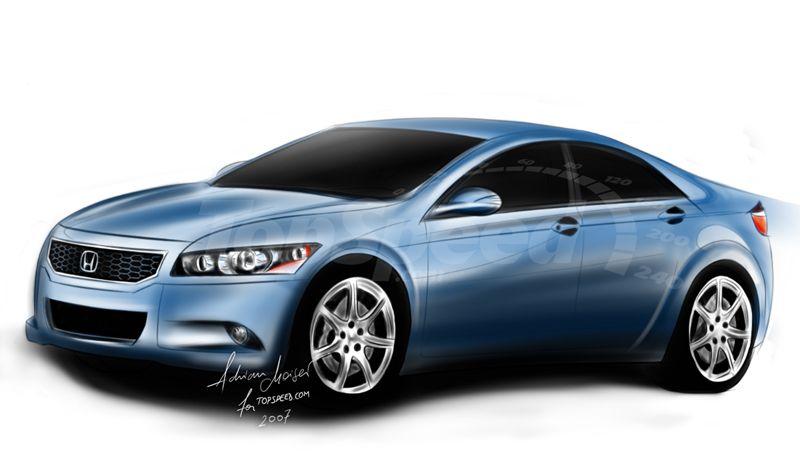At Detroit Auto Show, Honda unveiled the Accord Coupe Concept that revealed styling cues to be used by the new 2008 Accord, which goes on sale in America in the fall.The car will debut in both sedan and coupe versions. The 2008 Accord will have as a main competitor the Nissan Altima, Mazda 6 and Ford Mondeo. Prices are expected to start at $21,000.
honda-accord
- Make: Array
- Model: honda-accord
2008 Honda Accord
- Make: Array
- Model: 2008 Honda Accord
- [do not use] Vehicle Model: Array
"The Accord Coupe Concept demonstrates the styling direction for the upcoming, eighth-generation Accord," said John Mendel, senior vice president of American Honda. "As the industry’s target for midsize segment excellence, the all-new Accord will set a new benchmark for safety, efficiency, performance, refinement and style."
The design of the 2008 Accord will be inspired by the new Civic design philosophy, with a wide stance, large wheels, and clean, flowing styling. The car is said to be larger overall than the current model and will include a new coupe.
The 2008 Accord will be powered by a 2.2-liter turbodiesel V4 engine. Also a more powerful and lower-emissions V6 engine will provide higher fuel efficiency with the incorporation of Honda’s next-generation Variable Cylinder Management (VCM) technology. The 2008 Accord will have an output of 250 hp.
Honda will offer a new four-wheel drive unit for the Accord. This SH-AWD system will distribute torque between the front and rear wheels within a range of 70:30 and 30:70 in accordance with driver input and driving conditions, while at the same time controlling torque distribution to the two rear wheels within a range of 100:0 and 0:100. The system will continuously vary torque distribution to all four wheels to maintain optimal traction in all conditions, achieving superior driving stability, and handling that responds faithfully to the driver’s command.
As part of Honda’s "Safety for Everyone" initiative, all next-generation Accord models will include the company’s Advanced Compatibility Engineering Body Structure. Honda’s ACE Body Structure incorporates a front-end frame structure that helps absorb and disperse crash energy over a large area in a frontal impact. ACE also makes the vehicle more crash compatible in frontal impacts with vehicles of differing ride heights.
With the addition of the next-generation Accord to the lineup of vehicles with ACE, more than 75 percent will be equipped with the technology on a sales-weighted basis after it goes on sale.
There are also rumors of a new Honda Accord hybrid due out by 2009.
-----
History
The Honda Accord, currently in its seventh generation in 30 years, remains Honda’s best-selling vehicle worldwide and has consistently been one of the top five best-selling automobiles in the U.S. Known for its ride and handling, comfort and convenience features, safety, quality and refinement, the Accord delivers world-class style with sophistication and performance. The Accord was launched in 1976 with subsequent major re-designs debuting in 1982, 1986, 1990, 1994, 1998 and 2003. More than 9.5 million Accords have been sold in the U.S. since 1976.
First generation: 1976–1981
The first generation Honda Accord was launched in 1976 as a two-door hatchback with 68 horsepower, a 93.7-inch wheelbase, and a weight of about 2,000 pounds. It was larger than the tiny Civic at 162 inches long. The Accord sold well, due to its moderate size and great fuel economy.
In 1979 a four-door sedan was added, aimed to do battle with models like Toyota Corona and Mazda's "new" 626. In 1981 a full-blown luxury trim level, called the SE, was offered. Sending out the first- generation Accord in style, the SE stocked an Accord Sedan with leather seating, power windows and door locks, alloy wheels and a sound system with cassette deck. Though this may not seem like a big deal now, back in 1981 manual window cranks and vinyl seats were typical for small cars while leather seats were reserved for big American luxury cars or expensive European makes such as BMW.
Second generation: 1982–1985
In 1982, the Accord was redesigned, and it became the best-selling Japanese nameplate in the US, holding that position for 15 years. Modernizing both the interior and exterior, the second generation Accord was mechanically very similar to the original. Under the fancy new skin (and aside from a slight increase in horsepower for the 1.8-liter engine from 72 to 75 hp), the Accord was basically unchanged, with mechanical components carried over from 1981. Pricing for the '82 Accords was $7,399 for the base two-door hatchback, $8,245 for the four-door sedan and $8,449 for the LX version of the two-door. 1982 also saw the start of Accord production in the U.S.
In 1983, Honda used a four speed automatic transmission in automatic models, a major improvement over the three speed Hondamatic. The Special Edition (SE) featured vinyl seating, power moonroof, power windows and locks. Columbus Slate Grey was added as a color option.
1985 was the last year for the second-generation Accord and Honda offered a special version of the four-door to celebrate. This time it was called the "SE-i," the small "i" indicating that the engine's induction was by fuel injection, as opposed to the other Accords, which had a carburetor to handle feeding duties.
Third generation: 1986–1989
The third generation Accord was introduced in Japan and Europe in 1985 and the rest of the world in 1986. The Accord had a very striking shape, and looked more akin to a sports car than a conventional 3-box sedan. It bore a resemblance to the second and third generation Prelude. One notable feature was the flip-up headlights, extremely unusual for a sedan. A fixed headlight version appeared in 1987 for European and Japanese markets. The fixed headlight version also had a different tailight cluster.
The engine was increased in size, from 1.8 to 2.0- liters and produced either 98 horsepower (in the carbureted DX and LX trims) or 110 hp in the fuel-injected LXi. An all-new suspension featured "double-wishbone" design at all four wheels. Derived from Formula 1 racecar chassis design, this setup allowed precise handling while still delivering a comfortable, slightly firm ride. As the family sedan battle between Toyota and Honda heated up, it seemed that those interested in sporty handling went for the Accord, while those who weren't looking for a poor man's BMW and who preferred a softer ride chose the Camry.
An Accord Coupe joined the hatchback and sedan in 1988. The new two-door was available in either base DX or loaded LXi trim. Very minor tweaks to the sedan's taillights and bumpers were the lone visual changes for the '88 Accord. Functionally, a bump in horsepower for the LXi engine (from 110 to 120 hp) improved the performance of the top Accords.
Fourth generation: 1990–1993
In 1990 the Accord underwent a major redesign based on a larger "CB" chassis. The more conservative Accord now bears resemblance to the first-generation Acura Legend. All Accords sold in North America now come with a 2.2 liter electronic fuel injected engine standard. The Accord has matured into a larger car now approaching the likes of the Ford Taurus but still given "compact" status. The LX-i and SE-i trims are dropped. Available trims in the US were DX, LX, and EX.
In 1991 Honda unveiled the Accord Wagon, manufactured at the Marysville plant. Exports for Europe, including right hand drive wagons, were made in the United States. The wagon is available only in LX and EX trims and includes a driver's side airbag as standard equipment. The SE returns to the lineup and includes leather-trimmed upholstery, a 140 HP engine, automatic transmission and Anti-Lock Brakes as standard equipment.
In 1992 all Accords were equiped with a driver's side airbag, eliminating the somewhat annoying motorized shoulder belts of the sedans. This year, the SE was dropped from the team and the EX benefited by getting the 140 horsepower motor and four-wheel disc brakes with ABS (antilock braking system) formerly fitted to the SE. Revisions to the grille and bumpers were so subtle as to be barely noticeable. A more obvious update was fashioned on the taillights (except on the wagon), which made it easier to tell a '92 Accord Coupe or Sedan from its '91 counterpart.
Fifth generation: 1994–1997
In 1994, the fifth generation Accord was released based on the "CD" chassis. With styling cues again borrowed from the Honda Prelude as in 1986, the Accord gained overall size and was now classified as a "mid-size" automobile.
The 1994 engines were upgraded, with each version receiving a 5 horsepower bump in output, meaning 130 horses now motivated the DX and LX models and EXs boasted 145 ponies. More importantly, the EX's engine featured Honda's "VTEC" (Variable valve Timing and lift, Electronic Control) system.
in 1995 the Accord was equiped for the first time with a V6 engine. Available in the LX or EX Sedans, this was actually an old engine, the same 2.7-liter used in the pre-1991 Acura Legend. Rated at 170 horsepower and matched only to a four-speed automatic transmission, the V6 was about one second quicker to 60 mph (at around 8.5 seconds) versus the four-cylinder car. It was also quieter and smoother than the four banger, itself an engine known for refinement. To accommodate the bulkier motor, V6 Accords had a slightly longer nose, and to add an upscale touch, the grille was trimmed in chrome. The EX V6 also had leather seating standard, and other EX news included the discontinuance of the manual transmission EX Wagon.
Sixth generation: 1998–2002
For 1998 another major redesign took place for the Accord. Now in its sixth-generation, the largest Accord to date reverted back to its more conservative roots. The wagon was discontinued in North America but remained available in other parts of the world.
The 2.3-liter inline four in LX and EX models employed Honda's VTEC system to make 150 horsepower. The DX didn't have the high-tech variable valve timing system and was rated at 135 ponies. A new 3.0-liter V6 produced 200 hp (30 more than the V6 that was available in 1997) and could be had in LX and EX models.
In 2001, both the Accord sedan and coupe underwent a minor facelift. A new front facia, rear bumper, side skirt alteration, new taillights and wheel designs freshen the Accord's look. The interior sees little changes with the exception of some fabric and audio configuration changes. The LX and LX-V6 now include a standard CD player, and the EX and EX-V6 now include a 6-disc in-dash CD changer with cassette player and automatic climate control. The Special Edition returns to the coupe and sedan models.
Seventh generation: 2003–2007
In 2002, the Accord underwent another major redesign. This time, Honda decided to create two different cars that would bear the Accord name in different markets. The car known as the Accord in the US, Brazilian and Asian markets is based on the JDM Honda Inspire. Meanwhile the Japanese and European markets received a smaller, sportier Accord. This car was later released in the US as the Acura TSX.
The 2.4-liter four delivers 160 hp while the 3.0-liter V6 pumps out an impressive 240 hp. Accord features three choices of transmissions — a refined five-speed manual (for the four-cylinder models), a new five-speed automatic (standard on the V6 and optional on the four) and a new six-speed manual (available only on the V6 coupe) — sends the power to the front wheels.
-----
Competitors
Nissan Altima Coupe
With its next generation design for the 2007 model year, Nissan’s best-selling vehicle in the United States is poised for even greater success as it establishes segment leadership in style, design, performance and innovation. The next-generation Altima is also expanding its model offerings with a new Altima Hybrid, set to go on sale in select markets in January 2007, and a dramatically styled new Altima Coupe, which will go on sale as a 2008 model in summer 2007.
The new Altima Coupe is offered with a choice of two engines and two transmissions. The 3.5-liter 24-valve DOHC V6 is the “next generation” version of the 12-time Ward’s “10 Best Engines” award-winning VQ-series V6. For use in the Altima Coupe, it is rated at 270 horsepower and 258 lb-ft of torque and offers strong acceleration and refined sound quality. The V6 features reduced friction, improved cylinder head cooling and new twin knock sensors.
Also available with the new Altima Coupe is a 2.5-liter DOHC 16-valve QR25 inline 4-cylinder, producing 175 horsepower (170 hp CAL) and 180 lb-ft of torque (175 lb-ft CAL). This engine has been refined from the previous version, with a larger, equal-length intake manifold, increased compression ratio and reduced friction characteristics. It features a silent chain drive and a balancer system (with balancer changed to a center-mounted location for better NVH) that effectively negates vibrations without taking up much space – combining ideal packaging and smoothness.
Mazda 6
The MAZDA 6 is one of the hottest mid-sized sports sedans on the market, not to mention one of the most affordable. Strong performance, terrific handling and great style have made it a favorite with consumers seeking both space and sportiness.
The range-topping 3.0-liter V6 engine has been noted for its strong performance and refinement, and now gets a torque boost from 190 to 199 lb-ft (at 5,000 rpm). The change makes the engine even more tractable and the car easier to drive, and also will improve off- the-line performance. In addition, fuel economy is improved by one mile per gallon on both manual and automatic vehicles. Because of changes to the exhaust system to boost torque, maximum horsepower is reduced slightly from 220 horsepower to 215 horsepower (at 6,000 rpm).
As before, the V6 is mated to either a five-speed manual gearbox or six-speed Sport A/T automatic with manual shift. The MAZDA 6 is in the only vehicle in the class to be offered with a six-speed automatic transmission. The wide number of ratios improves performance, drivability, smoothness and gas mileage. The tall top gear also improves comfort and quietness on the freeway, while a short first gear gives aggressive off-the-line performance. These are all examples of MAZDA 6 ’s sports-first philosophy.
Ford Mondeo
The new Mondeo clearly demonstrates how Ford of Europe’s ’kinetic design’ language is shaping the company’s new models. This form language will be progressively applied to future Ford vehicles in an appropriate way, depending on individual vehicle or market segment tastes.
The new family face of Ford is further represented at the front end by a premium-feel, large upper grille opening, and an inverted trapezoidal grille below the license plate. Large and distinctive headlamps and lower foglamps are a key design element, and draw the eye around the chamfered corners, neatly disguising the volume required to meet the latest pedestrian protection requirements.
A muscular shoulder line runs through the side of the car to a relatively high point at the rear. This produces a dynamic window graphic when the so-called "daylight opening" (DLO) is viewed in profile, and an upward kick at the rear of the DLO further emphasizes the feeling of motion. Distinctive rear lamps also feature carefully designed graphics that enhance the overall feeling of premium quality.

